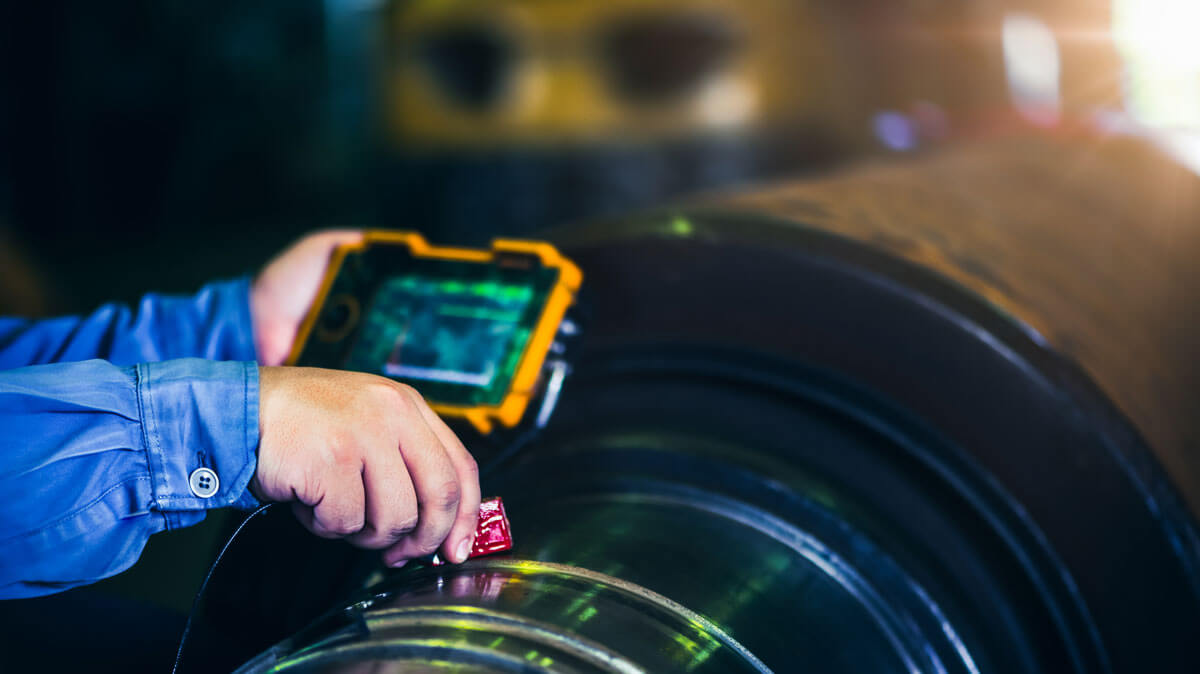The Significance of Thorough Welding Inspection in Industrial Applications
In the realm of commercial applications, the importance of thorough welding assessment can not be overstated. As we check out the multifaceted advantages of thorough welding assessments, one must think about the broader ramifications on safety and security, reliability, and cost-effectiveness in industrial procedures.
Enhancing Structural Honesty
When it comes to welding inspection in commercial applications, enhancing architectural honesty is vital. The main goal of welding assessment is to guarantee that the welds are qualified of bearing the anticipated anxieties and loads they will run into in service.
The significance of preserving structural integrity in welded frameworks can not be overemphasized. Poorly carried out welds can result in catastrophic failings, resulting in costly repair work, downtime, and even endangerment of human lives. Examiners play a crucial role in the lifecycle of industrial parts, providing assurance that the welding process supplies the preferred toughness and resilience.
In addition, progressed innovations, such as phased array ultrasonic screening and digital radiography, deal improved capabilities in finding potential weaknesses, enabling corrective actions prior to concerns intensify. By focusing on the stability of welds through careful assessment, industries can guarantee operational performance and prolong the durability of their facilities.
Identifying Welding Defects
Determining welding problems is a crucial aspect of making certain the security and integrity of welded structures. Usual welding flaws consist of porosity, fractures, incomplete fusion, and undercutting.

Competent assessors use both aesthetic exam and progressed non-destructive testing (NDT) methods, such as radiographic or ultrasonic screening, to spot these issues. The prompt recognition and rectification of welding defects are vital to preserve the structural integrity and long life of industrial components.
Ensuring Conformity Requirements
Preserving the stability of welded frameworks extends past recognizing issues; it calls for adherence to rigorous conformity criteria. Conformity with recognized standards, such as those offered by the American Welding Society (AWS) and the International Company for Standardization (ISO), makes sure that welds meet minimal safety and quality needs. These requirements encompass a wide variety of standards, consisting of material requirements, welding procedures, and qualification of welders. Adherence to these standards is essential to avoid structural failings, which can bring about devastating effects in commercial applications.
Regular audits and inspections are necessary in confirming conformity. Examiners have to possess an extensive understanding of the appropriate requirements and be experienced at utilizing numerous non-destructive screening (NDT) methods to assess weld top quality. By making certain that welding methods align with compliance standards, firms minimize the risk of non-conformity, which click here for more info can lead to legal responsibilities and safety risks.
Additionally, maintaining conformity not just safeguards structural integrity but likewise enhances a company's track record in the sector. Clients and stakeholders are a lot more most likely to trust fund firms that continually show a commitment to quality and safety and security with rigorous compliance. Therefore, guaranteeing compliance requirements is a vital part in the successful execution of welding in industrial applications.
Minimizing Upkeep Costs

The application of innovative non-destructive testing (NDT) methods, including ultrasonic, radiographic, and magnetic bit inspections, enhances the capability to identify subsurface defects without endangering the architectural honesty of components. By using these strategies, industries can considerably expand the service life of their devices, minimizing downtime and the connected economic burden of upkeep activities.
In addition, a durable welding assessment regimen sustains the optimization of maintenance routines, moving from responsive to anticipating upkeep approaches. This positive method not just stops unanticipated failings however additionally improves resource allocation, making sure that upkeep efforts are focused and efficient. Eventually, the investment in rigorous welding evaluation is offset click for source by the significant cost savings understood through reduced maintenance demands, adding positively to the overall functional effectiveness of industrial ventures.
Improving Safety Measures
Welding examination plays a crucial function in this context, as it guarantees that all connections and joints satisfy stringent security standards. Comprehensive examinations assist determine flaws such as fractures, porosity, or insufficient blend that can endanger structural stability.
To improve precaution, taking on innovative non-destructive testing (NDT) methods is important. Approaches like ultrasonic testing, radiographic screening, and magnetic fragment evaluation permit for comprehensive assessment without damaging the framework. These technologies allow examiners to detect hidden problems early in the building and construction process, promoting prompt restorative activities. Executing a durable high quality control system that consists of normal training for assessors and welders guarantees adherence to developed safety and security requirements.
Last but not least, promoting a society of security within the organization highlights the value of comprehensive welding assessments. Urging open interaction and partnership amongst welders, engineers, and inspectors contributes to a common dedication to safety excellence. Welding Inspection Madison. In doing so, industries can safeguard their operations, protect workers, and maintain public depend on

Conclusion
Complete welding assessment is important in commercial applications, dramatically enhancing architectural stability and reliability. By employing sophisticated non-destructive screening approaches, possible welding flaws such as fractures and insufficient combination are determined early, guaranteeing compliance with industry criteria and cultivating client count on. Rigorous examinations bring about lowered maintenance costs and contribute to a safer working setting. Inevitably, the thorough execution of welding examinations plays a crucial duty in preserving operational effectiveness and safety in commercial settings.
As we discover the multifaceted advantages of persistent welding evaluations, one should consider the more comprehensive implications on safety and More Help security, dependability, and cost-effectiveness in commercial procedures.
The key goal of welding inspection is to make certain that the welds are capable of bearing the anticipated tons and anxieties they will encounter in solution. Efficient welding examination plays an indispensable function in reducing these costs by making certain the stability and longevity of welds, consequently mitigating the danger of early failures.Thorough welding inspection is crucial in industrial applications, considerably improving architectural honesty and integrity. Ultimately, the diligent execution of welding evaluations plays a vital duty in keeping operational efficiency and safety in industrial settings.